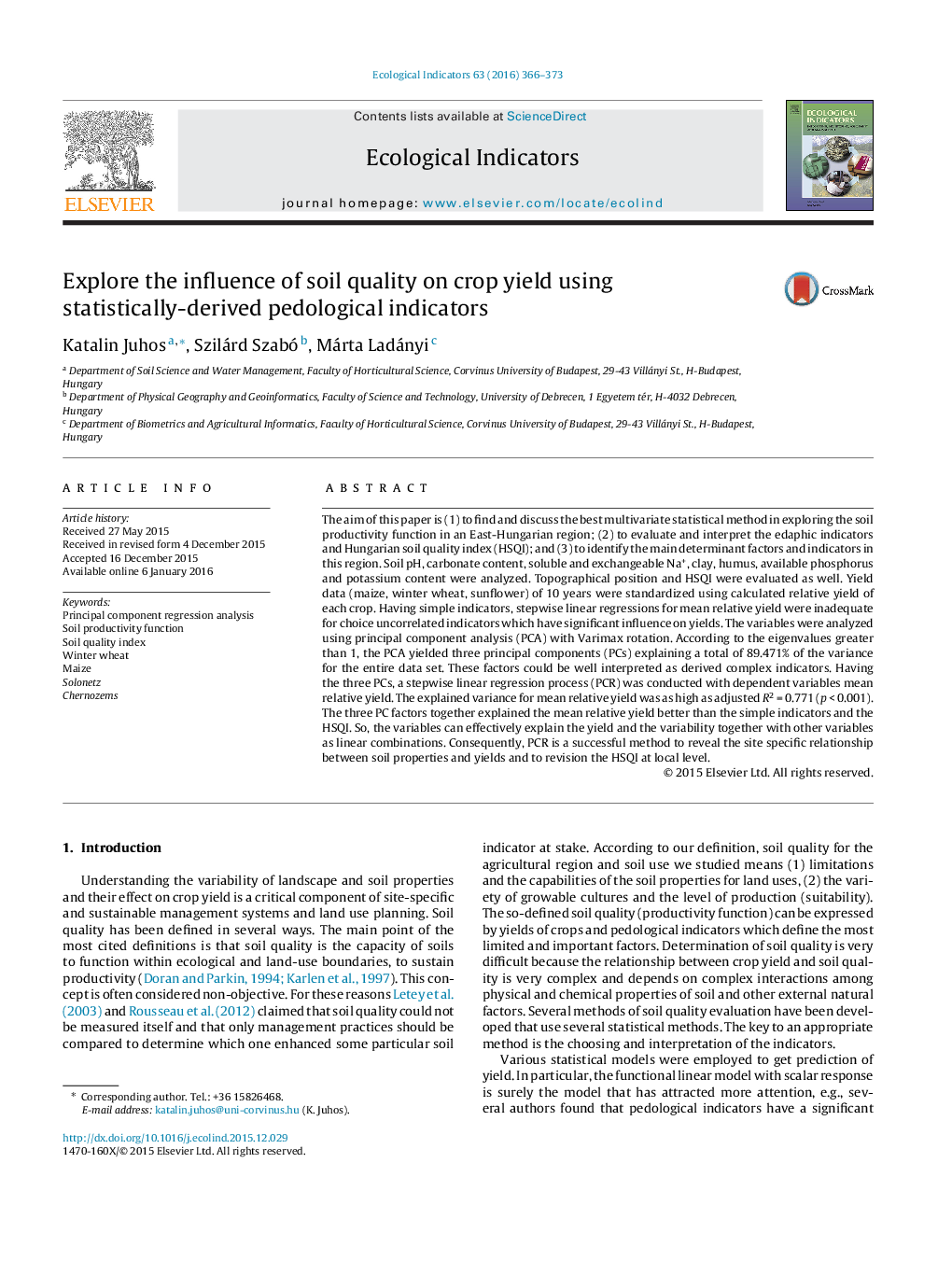| Article ID | Journal | Published Year | Pages | File Type |
|---|---|---|---|---|
| 6293898 | Ecological Indicators | 2016 | 8 Pages |
The aim of this paper is (1) to find and discuss the best multivariate statistical method in exploring the soil productivity function in an East-Hungarian region; (2) to evaluate and interpret the edaphic indicators and Hungarian soil quality index (HSQI); and (3) to identify the main determinant factors and indicators in this region. Soil pH, carbonate content, soluble and exchangeable Na+, clay, humus, available phosphorus and potassium content were analyzed. Topographical position and HSQI were evaluated as well. Yield data (maize, winter wheat, sunflower) of 10 years were standardized using calculated relative yield of each crop. Having simple indicators, stepwise linear regressions for mean relative yield were inadequate for choice uncorrelated indicators which have significant influence on yields. The variables were analyzed using principal component analysis (PCA) with Varimax rotation. According to the eigenvalues greater than 1, the PCA yielded three principal components (PCs) explaining a total of 89.471% of the variance for the entire data set. These factors could be well interpreted as derived complex indicators. Having the three PCs, a stepwise linear regression process (PCR) was conducted with dependent variables mean relative yield. The explained variance for mean relative yield was as high as adjusted R2 = 0.771 (p < 0.001). The three PC factors together explained the mean relative yield better than the simple indicators and the HSQI. So, the variables can effectively explain the yield and the variability together with other variables as linear combinations. Consequently, PCR is a successful method to reveal the site specific relationship between soil properties and yields and to revision the HSQI at local level.
